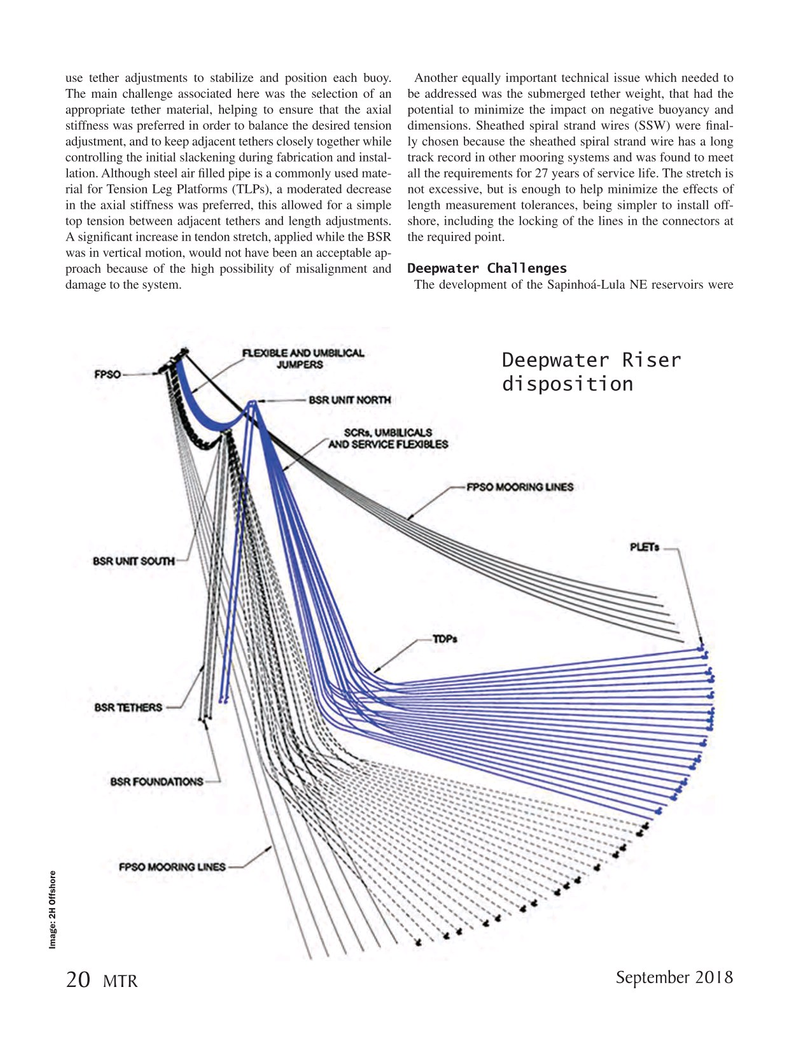
Page 20: of Marine Technology Magazine (September 2018)
Autonomous Vehicle Operations
Read this page in Pdf, Flash or Html5 edition of September 2018 Marine Technology Magazine
use tether adjustments to stabilize and position each buoy. Another equally important technical issue which needed to
The main challenge associated here was the selection of an be addressed was the submerged tether weight, that had the appropriate tether material, helping to ensure that the axial potential to minimize the impact on negative buoyancy and stiffness was preferred in order to balance the desired tension dimensions. Sheathed spiral strand wires (SSW) were ? nal- adjustment, and to keep adjacent tethers closely together while ly chosen because the sheathed spiral strand wire has a long controlling the initial slackening during fabrication and instal- track record in other mooring systems and was found to meet lation. Although steel air ? lled pipe is a commonly used mate- all the requirements for 27 years of service life. The stretch is rial for Tension Leg Platforms (TLPs), a moderated decrease not excessive, but is enough to help minimize the effects of in the axial stiffness was preferred, this allowed for a simple length measurement tolerances, being simpler to install off- top tension between adjacent tethers and length adjustments. shore, including the locking of the lines in the connectors at
A signi? cant increase in tendon stretch, applied while the BSR the required point.
was in vertical motion, would not have been an acceptable ap- proach because of the high possibility of misalignment and Deepwater Challenges damage to the system. The development of the Sapinhoá-Lula NE reservoirs were
Deepwater Riser disposition
Image: 2H Offshore
September 2018 20 MTR
MTR #7 (18-33).indd 20 MTR #7 (18-33).indd 20 9/6/2018 10:40:19 AM9/6/2018 10:40:19 AM

 19
19

 21
21
